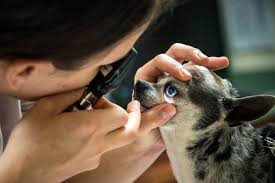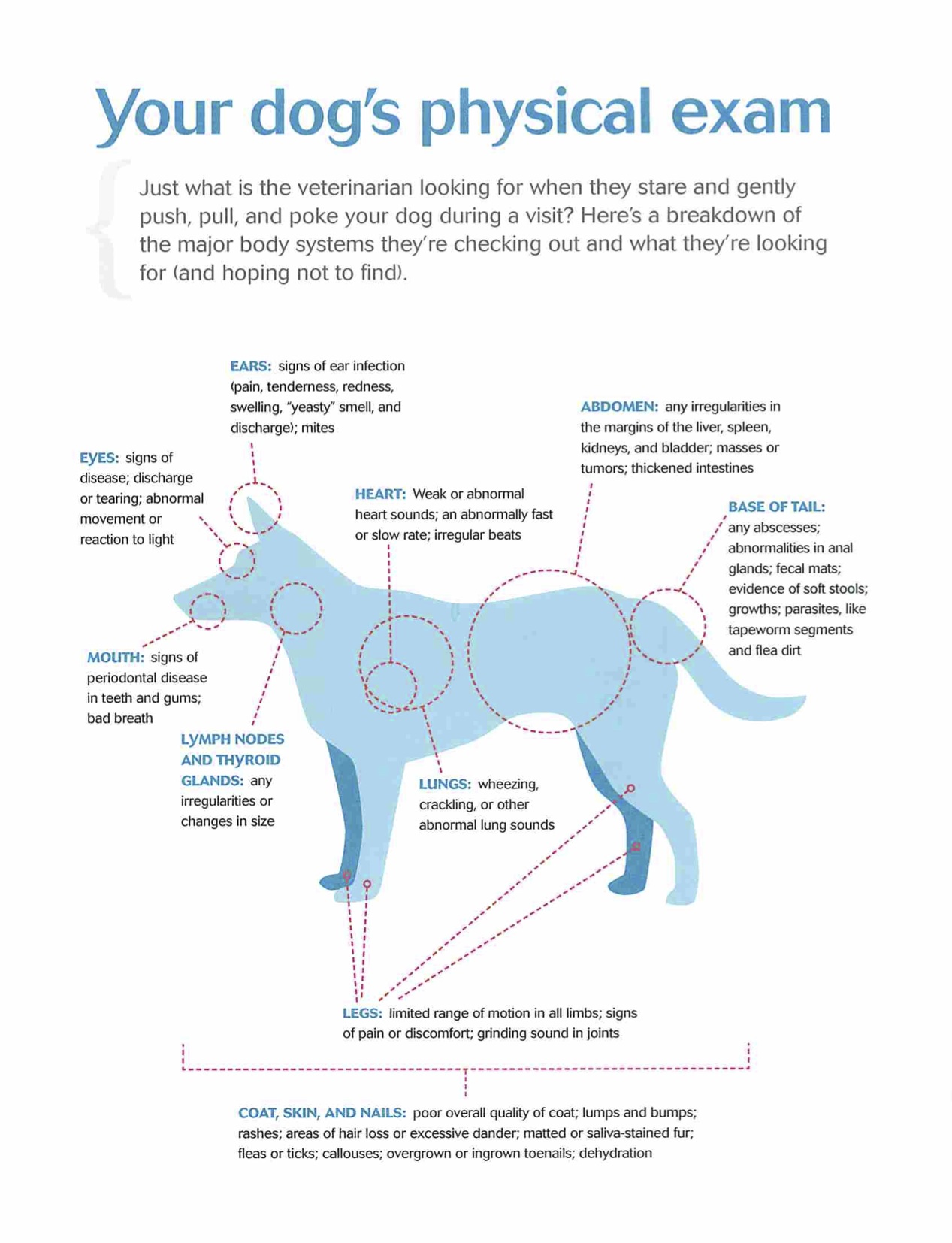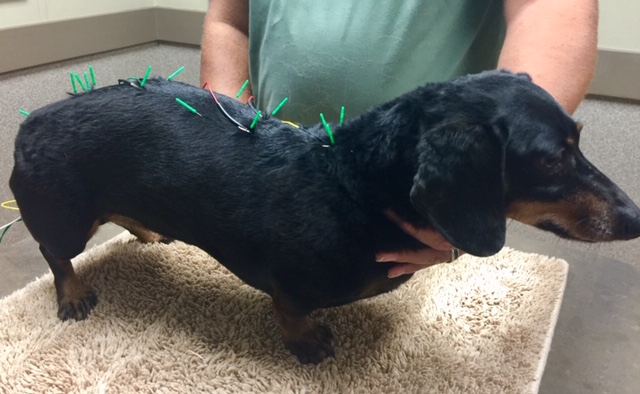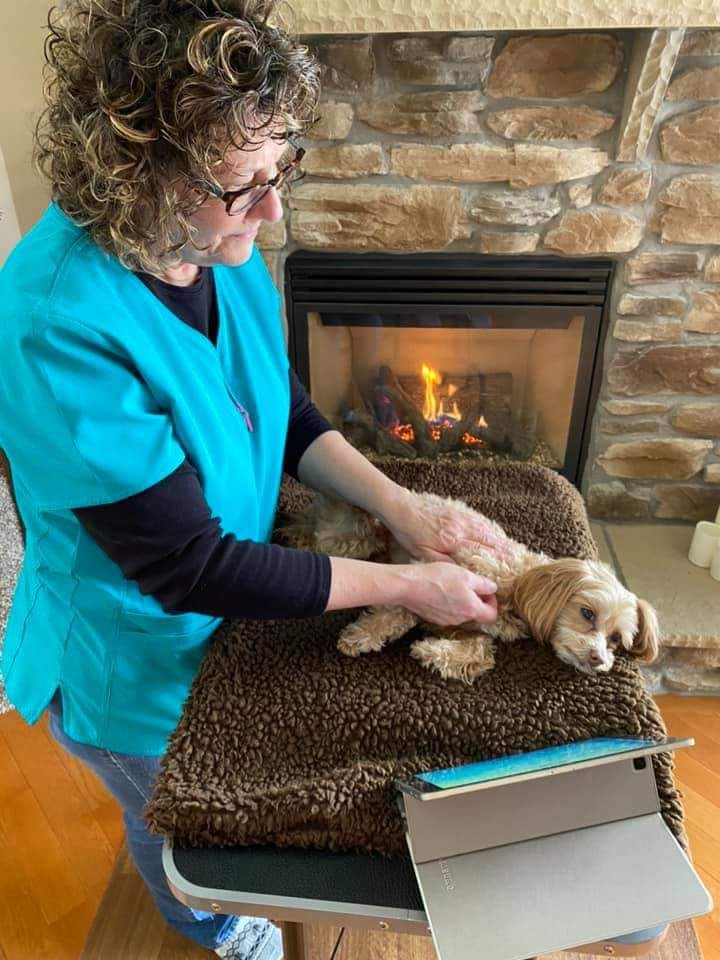Transforming Your Dog's Health Series Part III - What Should the Wellness Exam Include?
Posted by Jennifer Carter on Apr 23rd 2020
Welcome back to the Transforming your Dog’s Health Series! In this blog I will take a closer look at what makes up a good wellness program depending on the species, age, and health needs of your dog. Wellness is about being proactive. It is about using reliable health tests to provide feedback on your dog’s state of being. It is about making sure your dog stays healthy, lives a long life issue free and can thrive doing whatever your dog would like to do!
In addition to collaborating with Wendy Volhard, founder of Volhard Dog Nutrition, I have partnered with a few veterinarians from different areas of the country, who have graciously provided a wealth of information all in the spirit of helping the pet parent better understand through different veterinary points of view the tests that can define our dog’s wellness. Right off the bat we would like to thank Dr. Daniel Slovis of Lake Anna Veterinary Hospital in Mineral, Virginia, Dr. Laurie Coger with the Healthy Dog Workshop, and Dr. Karen Becker of Chicago Illinois for their contributions to this blog.
Let’s Build a Wellness Program
As you plan your wellness program with your veterinarian as a partner, feel free to carry this blog in with you as a reference tool to make suggestions and ask good questions. Your veterinarian may ask you to fill out a preliminary checklist along with a complete medical history of your dog. The checklist will ask about any issues that your dog may have, feeding practices, exercise regimens, stressors, and recent changes. For example, if you noticed that your dog is losing weight, your veterinarian may perform special tests to help rule out specific diseases that can cause weight loss. Make sure to fill out the forms thoroughly and bring a list of questions that you may have about your dog’s health. This is the perfect time to ask these questions.
According to our contributing vet team, the veterinarian is looking for your help in identifying issues and putting context around the following regarding your dog:
- Patterns and trends
- Keeping journal /record- changes pictures or video of the dog
- Lumps/bumps -size changes, sudden appearances
- Weight changes
- Tonal changes
- Mobility
- Activity level
 All of the collaborating veterinarians agree
that wellness exams usually include a complete physical examination, which is a
nose-to-tail inspection for any abnormalities. Your veterinarian will use
special equipment, including a stethoscope to listen to the heart and lungs, an
otoscope to view the inside of the ears, and an ophthalmoscope to examine the
eyes. Your veterinarian will also feel all over your dog’s body for lumps and
bumps. In addition, your veterinarian will check your dog’s vital signs
(temperature, pulse, and respiration) and record your dog’s current weight.
All of the collaborating veterinarians agree
that wellness exams usually include a complete physical examination, which is a
nose-to-tail inspection for any abnormalities. Your veterinarian will use
special equipment, including a stethoscope to listen to the heart and lungs, an
otoscope to view the inside of the ears, and an ophthalmoscope to examine the
eyes. Your veterinarian will also feel all over your dog’s body for lumps and
bumps. In addition, your veterinarian will check your dog’s vital signs
(temperature, pulse, and respiration) and record your dog’s current weight.

Many veterinarians perform testing on samples of blood, urine, and stool during a wellness exam. In Wendy Volhard’s book The Holistic Guide for a Healthy Dog written with veterinarian Dr. Kerry Brown, you can read further how to interpret blood work results and what they mean for your dog. An example of a typical wellness protocol is to check vital organ function using clinical testing methods throughout the year such as:
●CBC/Chem/UA annually until 7 then every 6 months
A CBC (complete blood count) and blood chemistries analyze chemical components in the blood. A CBC for dogs identifies and quantifies white blood cells, red blood cells and platelets in a given amount of blood. This includes analyzing the shape and condition of the cells for health and functionality. The Blood Chemistries, or blood serum tests (CHEM), evaluate a dog's organ function, electrolyte status, hormone levels and more. These tests are important to evaluating the health of older dogs, dogs with signs of vomiting, diarrhea or toxin exposure, as well as dogs receiving long-term medications and general health before anesthesia. Urinalysis (UA) is a routine test that reports the physical and chemical properties of urine. It is used mainly to assess the health of the kidneys and urinary system, but it can also reveal problems in other organ systems, and is important for diagnosing metabolic disease such as diabetes mellitus. A urinalysis also involves testing the urine for the presence of bacteria, blood, and sediment as well as evidence of infection, any of which may mean that there is a problem.
●4DX Snap Test Yearly -C6 Test follow up only if positive.
The 4Dx snap test in the veterinary world is a blood test that is run in the hospital and provides results in 8 minutes. The test is a screening process for six vector-borne diseases. The test checks your dog for Heartworm, Lyme, Ehrlichia canis, Ehrlichia ewingi, Anaplasma phagocytophilum and Anaplasma platys.
Note: I do the 4DX Snap test every 6 months because I do not use chemical aids in heartworm prevention. Because of this I want to be sure that I know those results more frequently. If you receive a positive tick result then further testing like C6 (Lyme quant level) or CBC.
●Fecal every 6 months or as needed
Routine fecal tests screen for common intestinal parasites (roundworms, hookworms, whipworms, coccidia, and Giardia). A fecal test should be done at least once a year by your veterinarian to keep your dog (and everyone else in your home and community) safe and healthy.

Note: I will run a fecal exam at the vet about a week after my dog eats a whole wild animal just to be sure she is not contracting a parasite from that food source. (Photo: Jennifer Carter)
Depending on your dog’s age, breed predispositions, current medical condition, and medical history, your veterinarian may recommend additional tests as part of your dog’s wellness examination. These tests can help determine if your dog has problems such as joint issues, allergies, anemia, infection, or organ disease. Sometimes in blood testing, it matters what time of day the tests are taken, what time of year in some cases and if fasting or not so work with your veterinarian to find the ideal time and circumstances so you get the most accurate results. Other tests, such as a thyroid evaluation, may be helpful, depending on the physical examination results and patient history. If you decide to do a thyroid test, you should choose a full thyroid panel, not just the T4. The T4 is only helpful if you are supplementing hormone levels and want to gauge effectiveness.
….But wait there is more!
Here are some smart, forward thinking, diagnostic wellness tests recommended for the proactive detection of issues across the dog’s systems. Not all the veterinarians who teamed up for this blog agree on the application or frequency of these tests, but this list and their suggestions allow you to research further and make your own decisions based on your dog’s needs. Note: Not all of these are used as screening tests unless something is indicated.
●Endocrine: CIALP, UCC Adrenal Panels (sex hormone testing, UT Endocrine lab) BHR, glandular
●Immune: Immunoglobulin testing (IgG, IgM, IgA) Nutriscan, Titers
Note: Dr. Coger suggests titers as a test to determine if a dog has responded to previous vaccinations and is immune to specific diseases. For more information please refer to some of Dr. Coger’s blogs on titers below
○https://healthydogworkshop.com/titers-part-two-immunity-without-vaccination/
Note: Dr. Slovis suggests DAP every 3 years and then titers every 3 years.
●Circulatory: BNP testing, homocysteine
BNP is an enzyme from the heart. If elevated means the heart MAY have something going on — Dr. Coger uses a lot in cats)
●Digestive: Dysbiosis testing (Dr. Coger suggests that Texas A&M has the best GI lab — send PLI/Folate/B12 levels there — indicates — Pancreatic insufficiency / Dysbiosis), microbiome assessment (Animal Biome)*, PLi
●Renal: SDMA, UPC/MA, BTA (Urine Protein Creatinine ratio / Microalbumiuria
Used to check for protein in INACTIVE urine — indicate early renal disease — like SMDA
●Metabolic: A1c (Baycom Diagnostics) Insulin (A1c — checks for diabetes — used more in human medicine but trying to use in animals), Glucagon, Ketones (BHB-only time vets test these are with severe diabetic crisis and show in the urine)
All these are diabetes issues mostly — you can also watch just blood glucose and weight of the animal.
●Inflammatory: CRP (VDI labs)- (Chronic inflammation test, Cancer test)
Other tests that could be added that support multiple systems:
●VDI Labs: Vit D, Vit B12
●Taurine Level- UC Davis Lab-For dogs predisposed to DCM
●Embark genetic profile**- allows you to have a solid health genetic profile- especially for rescues and mixed breeds. (Only needs to be done once.)
●Hair Trace Mineral Analysis (HTMA) diagnostic test (Parsleypet.com)*
●Glyphosate Testing (Parsleypet.com)
*The Microbiome, Embark and HTMA tests are done at home and are non-invasive using the collection of fecal matter, saliva or hair collection.
**Embark uses a proprietary SNP-chip (single nucleotide polymorphism) that evaluates 200,000 locations across your dog’s genome, allowing for comprehensive results on disease risks and traits, testing for over 160 mutations associated with genetic diseases from DNA acquired through a cheek swab. The company works directly with consumers and in partnership with veterinarians. Each mutation is queried two to eight times and examined by a team of geneticists and veterinarians to ensure accuracy. As a research partner of the Cornell University College of Veterinary Medicine, Embark is committed to the continued development of the emerging science of genetic health information and shares updated information with consumers as it becomes available.
Note: Under the endocrine — Dr. Coger and Dr. Slovis suggest that you can check thyroid using Hemopet, Antech, or Idexx and follow up as needed — adrenal testing is done if needed- not routine Those are not routine tests performed without reason or suspicion- Reason $$$$$$.
Under the digestive System- Both Dr. Coger and Dr. Slovis suggest that the treatment for any of the digestive issues is usually good food (such as VOLHARD) and most issues resolve— one exception is EPI which requires an enzyme.
Proactive wellness protocols might also include alternative therapies such as Traditional Chinese Medicine (TCM), Kinesiology and hands-on and hands-off bodywork to be used therapeutically for pets as they are for humans, potentially reducing the need for some other clinical intervention.

Acupuncture is a component of traditional Chinese medicine. Acupuncturists insert needles or use electrical impulses in specific points along the energy channels. These channels are also called meridians. These channels can become blocked due to illness, injury, poor diet and toxic environments. Acupuncture stimulates pain-relieving endorphins, releases neurotransmitters to the brain, increases blood and energetic circulation, and unblocks the meridians so that energy can flow freely throughout the body. In addition to being used for respiratory, skin and gastrointestinal illnesses, acupuncture can be beneficial for pinal injury and disease and musculoskeletal problems – such as arthritis. A trained veterinarian or practitioner should perform acupuncture on your pet.
Acupressure is similar to acupuncture except that it is not invasive. Acupressurists use gentle pressure at specific points along the meridians with their fingers or crystal wands. There is specific training involved in animal acupressure. Both Dr. Slovis and Dr. Coger suggests that one can do chiropractic and acupuncture with a qualified veterinarian as maintenance without the use of medicine as an alternative therapy. When you employ these therapies you are trying to get the dog’s body back into equilibrium/ homeostasis. (Equal Yin and Yang) Dr. Slovis stated that just regular petting of the animal can act as a massage — if you feel a tightness you can rub the area to get the muscle to relax.

Massage therapists manipulate soft tissue and muscles to speed the healing of injuries, strains, and sprains and reduce the corresponding pain and swelling. At the same time, massage increases joint flexibility and range of motion and improves circulation and oxygenation of blood. (Photo: Whiskers 2 Toes Massage Therapist, Nancy Lilly) Physical therapy uses various techniques, including water and specialized equipment, to increase function and mobility of joints and muscles. Physical therapy can reduce pain and speed recovery from injury, surgery and degenerative and age-related diseases.
As you can see there are many protocols that you can do over the course of the year to fulfill a nicely rounded wellness plan for your dog. The biggest thing you can do to help prevent disease in your dog is creating a schedule of wellness exams at least yearly and ideally twice a year if you can. Yes, go to the vet with a healthy dog!
Other things you can do outside the vet office in-between visits are to look into your dog’s eyes looking for subtle changes in blood vessels indicating blood pressure change. Check your dog’s weight and feel lymph nodes. You can do your own abdominal palpation and note in your log any changes you feel. Let’s not forget about dental care and its importance. The following are issues related to gum Inflammation. Beneath the gum line, the bacteria associated with plaque release toxins that damage the surrounding tissues.
● Kidney and Liver Disease
● Heart Disease
● Loss of Weight and Appetite
Most fresh diets do not cause the build up on the teeth as 100% processed diets do, however dental hygiene is still needed over time. You can minimize the time in the vet office and the frequency of dentals having to be done by a veterinarian by doing daily maintenance on your own dog’s teeth. Finally, according to Dr. Coger, something you can do that will help make your dog’s wellness visits minimally stressful is at home training/husbandry. Teach your dog to be cared for- teach them it’s okay to have ears and teeth cleaned, nails trimmed, and to be regularly brushed.
Join me for the next blog which will focus on Parsley Pet’s Hair Trace Mineral Analysis test (HTMA). We will look at actual results and talk through findings. We will be collaborating with Parsley Pet owner, Matt Rowe and Veterinarian-Dr. Laurie Coger to bring you the most comprehensive information about the test.
Reference: Holistic Guide for a Healthy Dog (Howell Reference Books) Paperback – May 1, 2000
by Wendy Volhard (Author), Kerry Brown D.V.M. (Author)


